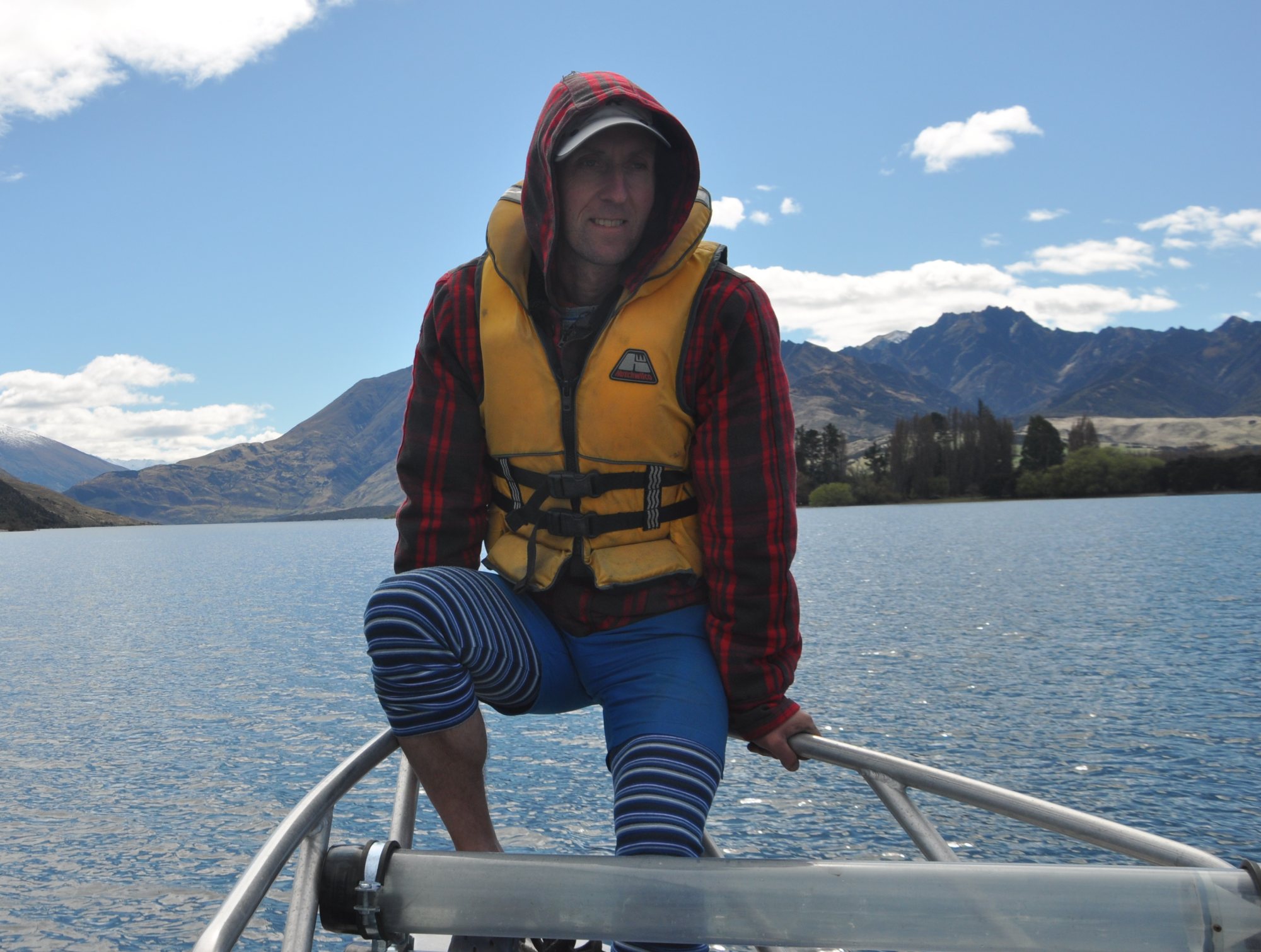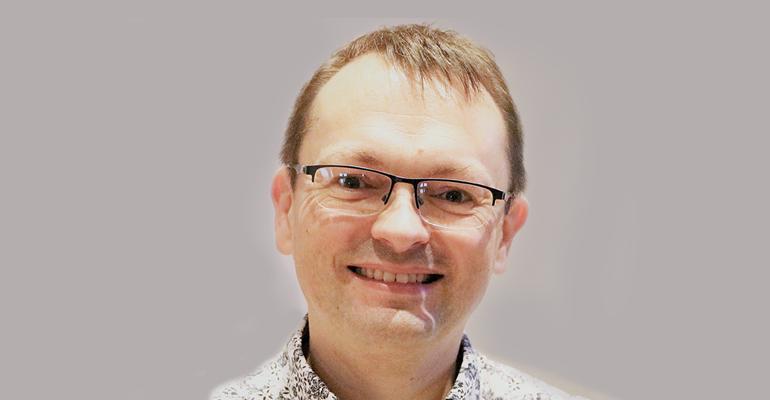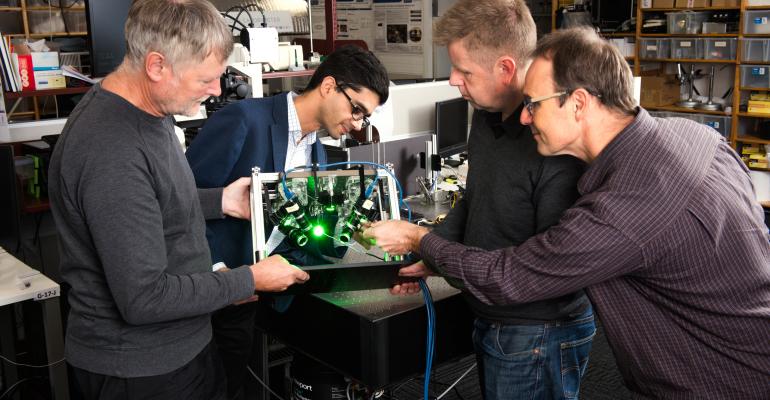Our researchersĀ mātou kairangahau
The Science for Technological Innovation (SfTI) National Science Challenge is a community of nearly 700 of New Zealand’s most talented physical science and engineering researchers from across 40 research organisations. On this page you will learn more about some of the researchers and their work.

Dr Jack Chen
Surfactants are materials that can sit at the interface between oil and water, allowing these two very different liquids to mix. This simple property has placed them at the centre of a US$45 billion a year global industry, which includes cleaning products, cosmetics, personal care, plastics, food & beverage, and agricultural chemicals.

Dr Phil Novis
“They’re like naughty children, but worse,” says fresh water crayfish (kōura) farmer John Hollows, who manages a kōura aquaculture business within the Ernslaw One forestry estate.

Dr Peter Li
PCR and RAT tests can tell you that you’re infected with Covid-19, but SfTI researcher Dr Peter Li’s working on a saliva test that can tell in minutes whether it’s Delta, Omicron or another strain.

Dr Leonie Jones - Ngāpuhi, Ngāti Kahungunu ki Wairarapa
Science for Technological Innovation (SfTI) Seed fund researcher, Dr Leonie Jones (Ngāpuhi, Ngāti Kahungunu ki Wairarapa), has always loved science but it was her high school science teacher who inspired her to make it her career.

Dr Jason Turuwhenua - Ngāti Porou and Ngāi Tūhoe
A platform device for vision testing applications

Dr Sarah Kessans
Dr Sarah Kessans, a lecturer in the University of Canterbury’s School of Product Design, is passionate about growing stuff in space, ultimately food, fuel and pharmaceuticals to benefit society.

Dr Nancy Garrity
Dr Nancy Garrity alongside mātauranga Māori practitioners kuia Leilani Rickard and her mokopuna Anastasia are developing a polymer composite material with tī kōuka using traditional tikanga-led fibre collection and extraction techniques. This material is set to compete with synthetic fibres and catapult brand Aotearoa-NZ to the world stage.

Dr Sungchul Jung
A tragedy in Dr Sungchul Jung’s homeland of South Korea has inspired a project seeking to leverage virtual reality (VR) technology to help doctors more effectively treat patients.

Professor Kathryn Stowell and Sophie Burling
New technology being developed as part of a SfTI research project, could provide an alternative to painful biopsies used to diagnose a rare and potentially fatal neuromuscular disorder – malignant hyperthermia.

Dr Angelique Greene
Taking on Micro-pollutants: Have you ever worried about chemicals you might be ingesting on a daily basis?

Dr Ehsan Vaghefi
Imagine you are one of the 260,000 patients with diabetes in New Zealand. You will experience some level of vision loss in your life because of diabetes.

Dr Amir Haji Rassouliha
In a pool in the Auckland suburb of Remuera, small-scale submarines are getting their first watery glimpses of the world.

Dr Will Browne
Dr Will Browne says modern artificial intelligence is still very easily fooled.

Dr Jens Dietrich
Software problems do more than slow your computer down. Your car won’t start, and for those who can remember back to Y2K, there’s the general fear that everything could suddenly screech to a grinding halt.

Dr Alan Yu Shyang Tan
Over 10 years of data, you might think the key to a successful forestry plantation is rainfall, but what if the data is examined over 100 years?

Professor Stephen Marsland
How do you monitor the numbers of native birds in our forests when the tui and bellbirds are imitating each other and the trill sounds of the ruru (moreporks) sound just like kiwi?

Professor Neil Dodgson
Augmented reality, where a computer-generated image is overlaid onto what’s really there by a virtual reality headset, works pretty well in a small room.

Dr Janet Stephenson
Electricity costs are a significant burden for many farms, especially those that run extensive irrigation and dairying operations.

Dr John Cater
New Zealand is small, but we control an enormous stretch of ocean that’s around 15 times bigger – more than 4 million square kilometres.

Dr Julie Choisne
In New Zealand children with cerebral palsy are not physically assessed until age six, in part because they need to be able to keep very still while 40 markers are exactingly fitted to their legs, and then be able to follow precise instructions about where and how to move in a purpose-built facility.

Dr Phil Novis
The anti-inflammatory properties of fish oil have made it a global $450 million-dollar industry driven by high amounts of omega-3s, but the herrings, sardines, mackerel, salmon and tuna don’t make the omega-3s themselves.

Professor Richard Haverkamp
If you take an artery from any animal at the freezing works and remove the blood, muscle and other tissues, you’ll be left with collagen. And that collagen is chemically the same as what’s found in your own bones, muscles, skin and tendons – it’s the most abundant protein you have.

Dr Tobias Langlotz
A field of poppies in full blossom would look very different if you were colour blind – and being unable to detect red from green could also affect your career opportunities.

Dr Simon Granville
Your computer takes time to boot up from cold because the hundreds of billions of transistors it contains are all busy asking the CPU what state they were in when the computer was shut down.

Dr Scott Post
Most horticultural spraying uses air-blast sprayers, which fire droplets of fertiliser or insecticide in a cloud around the orchard or vineyard, hoping that each leaf will be covered.

Professor Jonathan Scott
What if a piece of technological equipment, vital for the manufacture of radio, radar, blue tooth and wireless could be converted from measuring radio waves to measuring sound?

Dr Steve Mills
It’s dark inside your brain, and if you shone a torch in there, the tissues would also be soft, slippery and shiny-looking.

Dr Kevin Wang
Imagine having little sensors buried around your market garden telling you at 15-minute intervals what the soil’s moisture content and temperature readings were.

Professor Andy Cockburn
Touch screens are everywhere. They’re light-weight, easy to modify, and can be intuitively appealing to use.

Dr Avinash Malik
There are thousands of lines of code inside a cardiac implantable device, like a pacemaker, and that software is kept busy just trying not to over-react to the day-to-day heart rhythm changes a person goes through as they walk around, climb a few stairs, get cold, read a book, get a big fright or sleep.

Dr Chris Cornelisen
‘I can’t talk right now, my mussels aren’t feeding' — the aquaculture farmer ends the call and scrolls through his phone to his mussel mood dashboard, to find out what’s upsetting the crop.

Dr Peng Cao
Battery technology is a science hot-spot around the world. Multimillion-dollar research companies in the United States, China, Japan and Europe are racing to find the next big capacity boost to overtake the current front-runner – lithium-ion batteries.

Professor Sally Davenport
We know Sally as the Director of the SfTI Challenge, however she has many more strings to her bow.

Dr Renee Goreham
Renee is one of our SfTI researchers. She grew up in rural Australia and moved to New Zealand in 2016 with her husband Rich, and her children Ella (6) and Evan (3).

Dr Richard Parker
‘They taught me logging, I taught them calculus’ - tree fella to SfTI scientist, Dr Richard Parker.

Te Awhina Arahanga
Based at Lincoln AgriTec, Te Awhina Arahanga is at the interface between several SfTI research projects and Te Waihora environs and Rūnanga.

Dr Amir Haji Rassouliha
Iranian-born researcher Amir Haji Rassouliha is part of an Auckland Bioengineering Institute team within Auckland University working on a 2016 SfTI SEED project titled A giant leap for small displacements.

Dr Jerome Leveneur, Dr John Vedamuthu Kennedy, and George Chisholm
Based at GNS Science at Lower Hutt, Ion Beam Material Scientist Dr Jerome Leveneur, works in a team that includes John Vedamuthu Kennedy and George Chisholm.

Professor Steve Reeves
Waikato University Computer Science Professor Steve Reeves heads up a 2017 SfTI SEED project examining how the distributed ledger technology Blockchain will impact New Zealand, and can best be used to protect our interests.

Associate Professor Stephen Moratti and Dr Eng Wui Tan
In SfTI’s 2016 SEED funding round, Otago University chemists Dr Eng Wui Tan and Associate Professor Stephen Moratti received $100,000 to investigate developing materials that would act as drug reservoirs, but only release some of their payload on appropriate stimulation.

